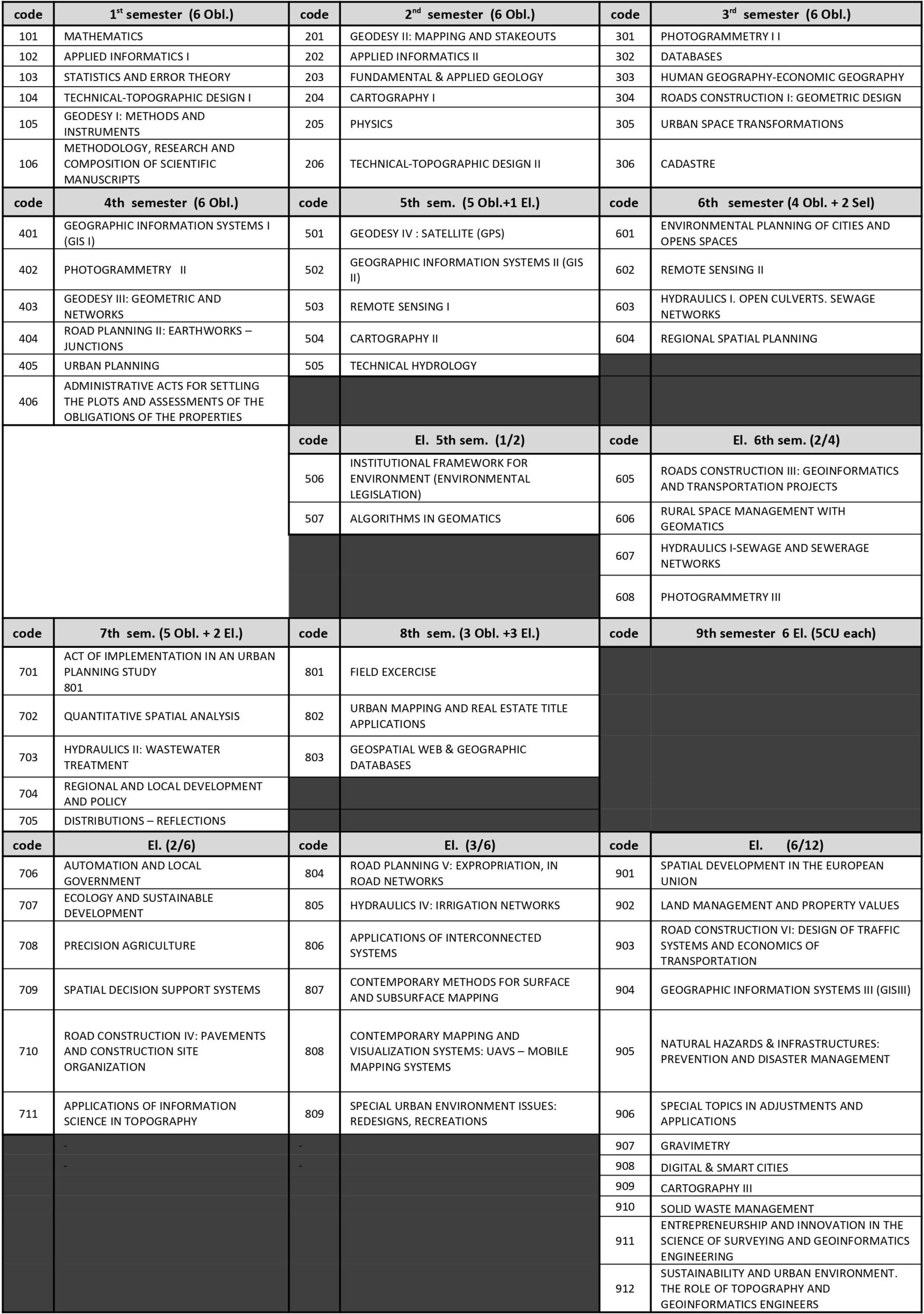The undergraduate study program of the Department of Surveying and Geoinformatics Engineering was structured in accordance to the European Credit Transfer and Accumulation System (ECTS).
The teaching hours do not exceed the number of 26 per week.
Up to the 4th Semester of Studies, the program includes obligatory courses only.
From the 5th Semester and on, elective obligatory courses are introduced, the majority of which are specialization courses and focus on all of the scientific areas treated by the Department, with adequacy and representativeness.
The duration of studies at the Department of Surveying and Geoinformatics Engineering of I.H.U. is ten (10) semesters (five years). The studies include theoretical teaching, practical exercises, laboratory exercises, assignments and case studies, either individually or in groups of students.
The tenth (10th) Semester, comprises the elaboration of the diploma thesis only, considered the only obligatory course of the semester.
Diploma Theses can be of many “types”, such as: “Research/Theoretical”, “Research/Development”, “Applied”, “Mixed”, “Extended Review” and others that can emerge from the permeation of science into new research areas and application fields. The study of a diploma thesis aims to solve, at a theoretical and/or applied level, one or more issues related to the sciences and technologies of Surveying and Geoinformatics and/or implement a technology or an idea. The thesis must link the theoretical foundations, to current information and knowledge towards the development of applied and academic research, new tools and new techniques, as well as the recognized trends and needs of the labor market and the real issues of production and services of the Surveying and Geoinformatics Engineer profession in Greece. It is processed by each student individually, or exceptionally by a small group of students (up to a maximum of three), when the topic requires a large volume of geospatial data collection and management. The student, under the responsibility of the supervising professor and by using the existing laboratory equipment, is asked to fully complete a specific assignment, which must, however, formulate research questions, be supported by scientific methodology based on bibliographic references and produces specific results based on methodology chosen.
The Program comprises 41 obligatory courses and 30 elective obligatory courses.
The student completes his/her studies by attending 55 courses (obligatory and obligatory elective), from a total of 71 offered courses and plus the diploma thesis defense in the last semester.
The total workload per course in the semester, results from the multiplication of the credit units corresponding to the course by 25 to 30. The lightest load (835) is found in the 1st semester and the largest in three consecutive semesters 5th (875), 6th (878) and 7th (877).
In the analysis of the workload per week, in addition to the workload for attending the courses, the workload related to the student’s other learning activities (e.g., field-work, solving laboratory exercises, working out topics, searching for data from sources, etc.) is calculated, according to the courses outlines, prepared by the lecturers.
The following table is rather helpful in presenting a complete view of the Undergraduate Program and the way it unfolds its subjects, throughout the 5-year study period.

